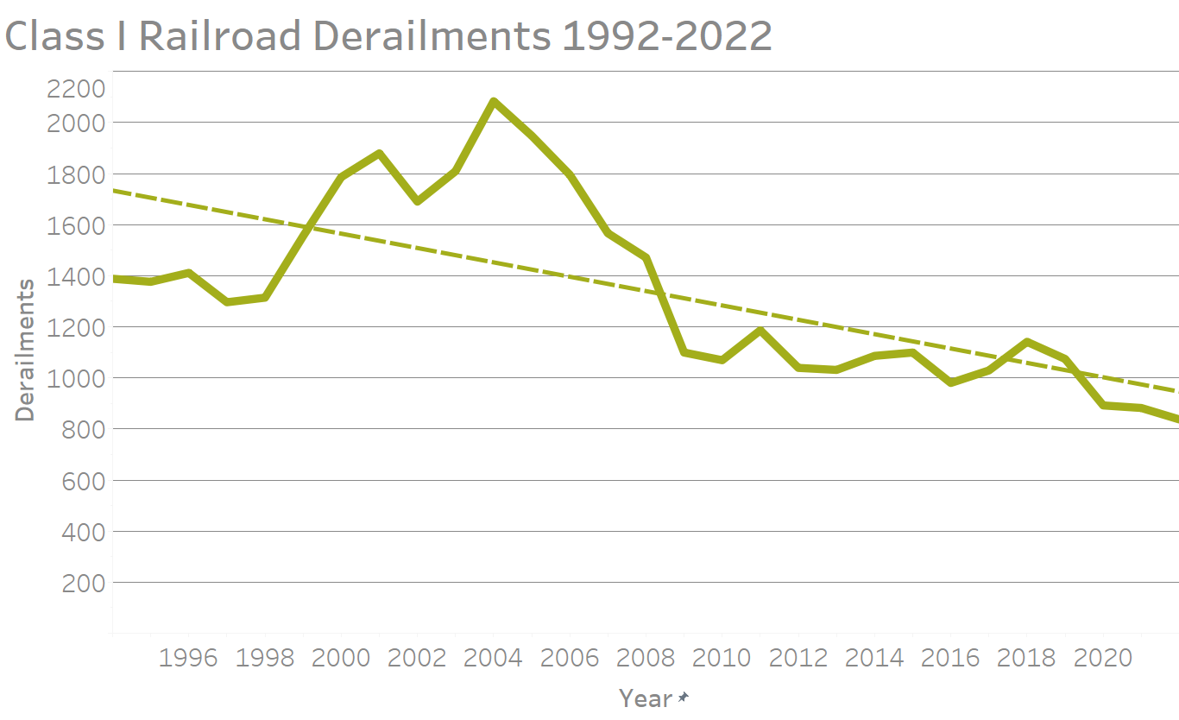What’s Up With All These Derailments?

A friend of First Analytics, aware of our safety work in the railroad industry, asked, “so what do you think of all the train derailments?” He had seen reports of three derailments just within the last few days. With the recent major derailment in Ohio, the media has reported several more minor derailments in the weeks following. Does this mean that derailments are on the rise?
Probably not. Data from the Federal Railroad Administration, as shown in the figure, shows that derailments have been on a steady decline for nearly two decades. There have been years where there has been an uptick, but nothing that varies substantially from the overall trend (the dotted line).

So what to make of that question?
- There is always natural variation. The perceived increased prevalence of recent derailments is likely due to natural variation and not indicative of an alarming upward deviation from normal.
- There are close to 1000 derailments per year. Nealy all of them are very minor. It is outlier events like the one in Ohio that draw attention.
- The media, once it takes hold of a story, likes to call out new related events, implicitly giving the impression that there is a dangerous trend. These derailments would not often make the news otherwise.
This is not to say we should not be concerned about derailments and other train accidents. The railroads should always be striving to reduce them. We have worked with two of the Class I railroads to build models to predict derailment risk. See, for example, this case study. We have also worked with them, to great success, on employee safety.
What is of concern, however, is the increasing number of collision of vehicles and trains at grade crossings. This blog post calls attention to the issue. In this case, a lot of the burden falls on the public — drivers and public road authorities – to work with the railroads to reverse this trend.
Should we be concerned about derailments? Of course. But we should understand that reactions and actions should be based on data and analytical models.